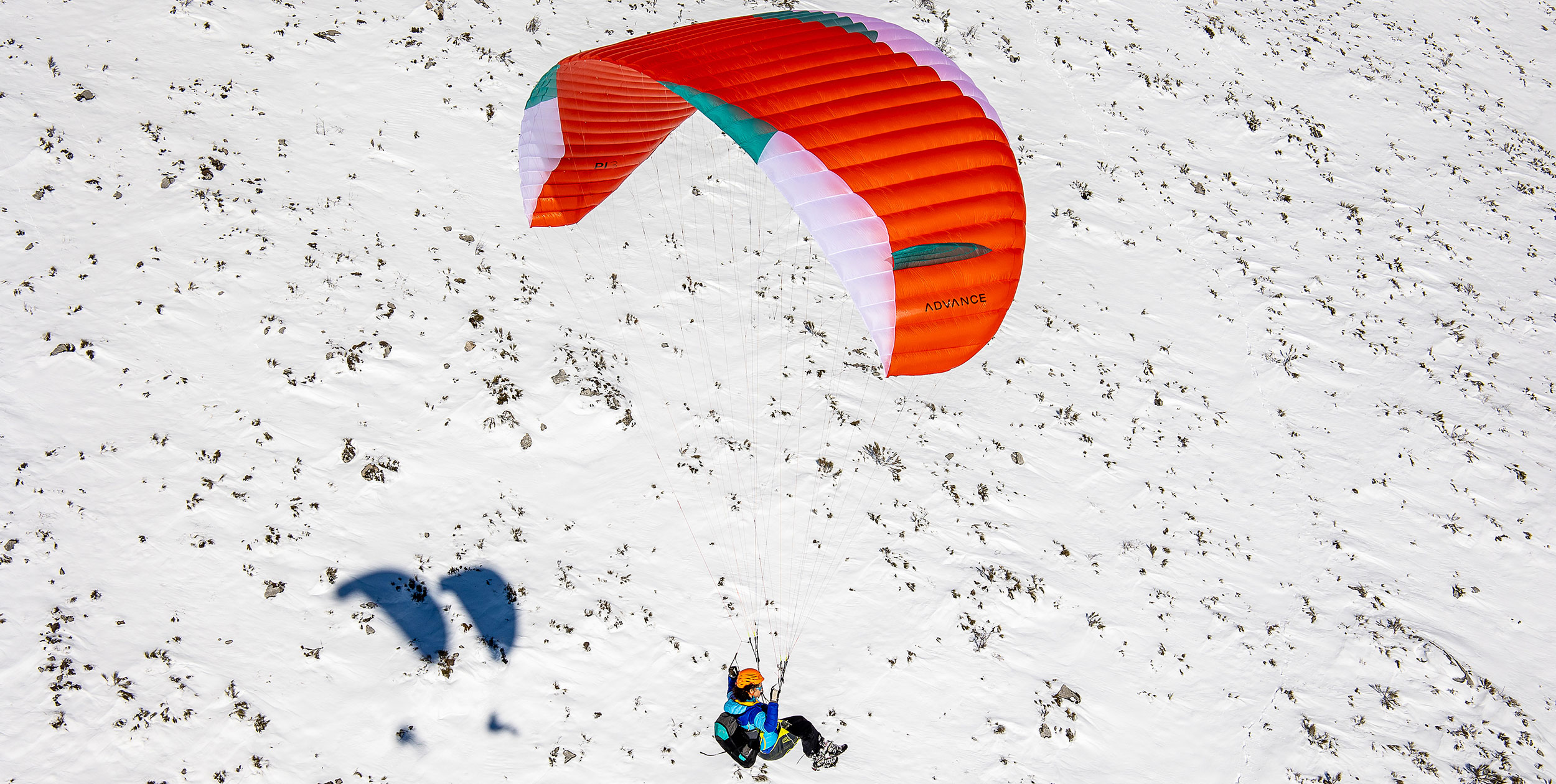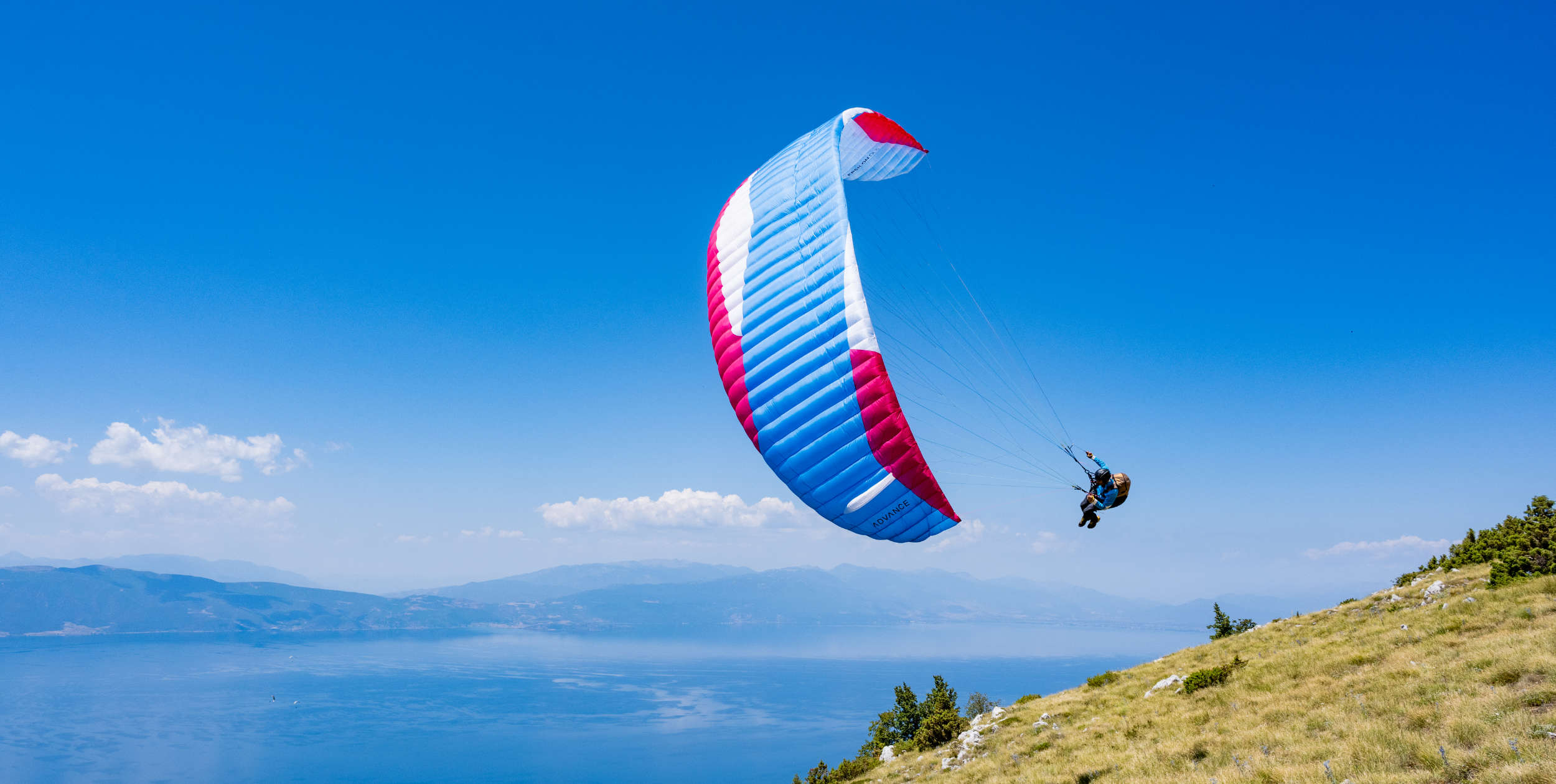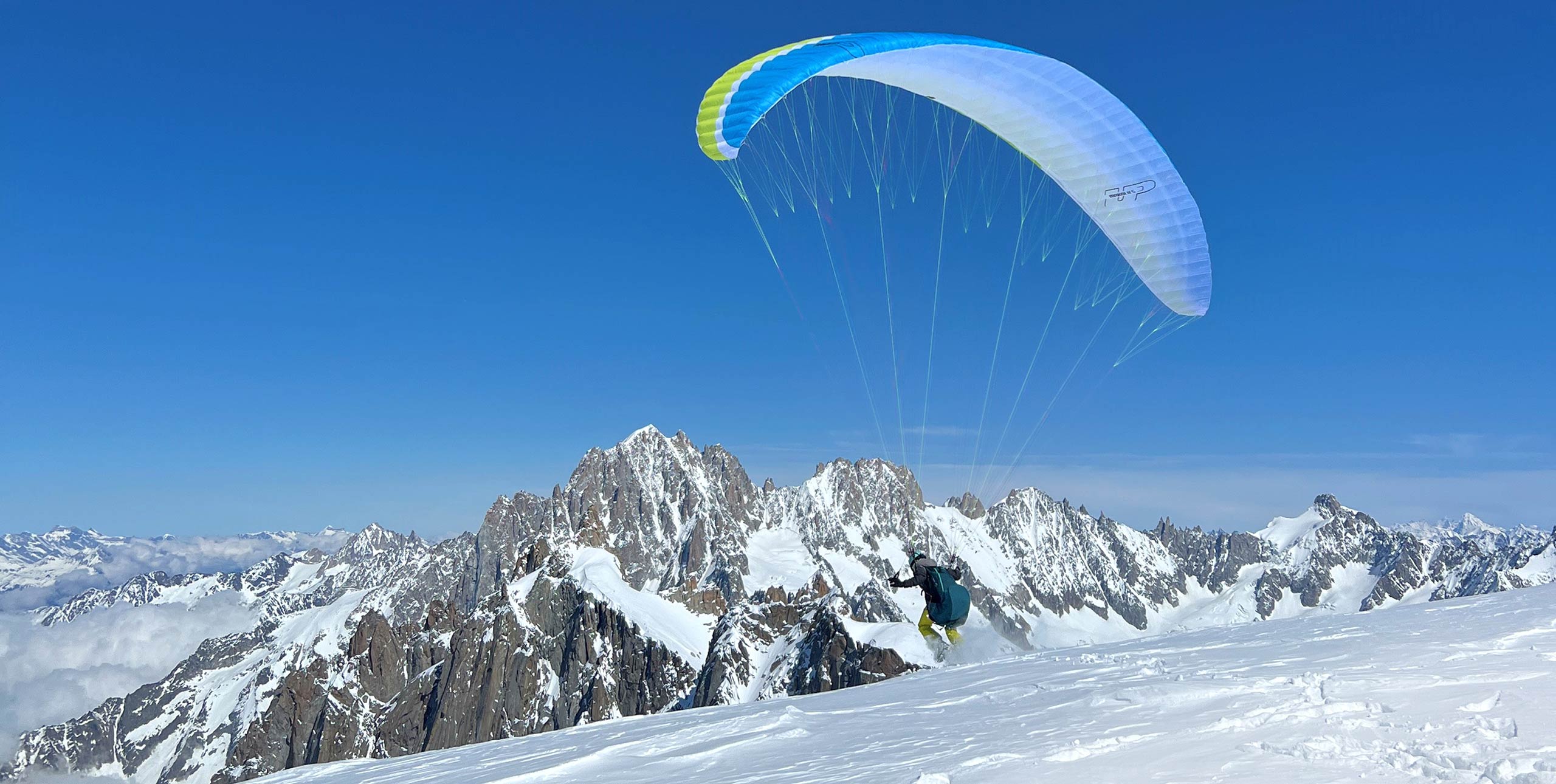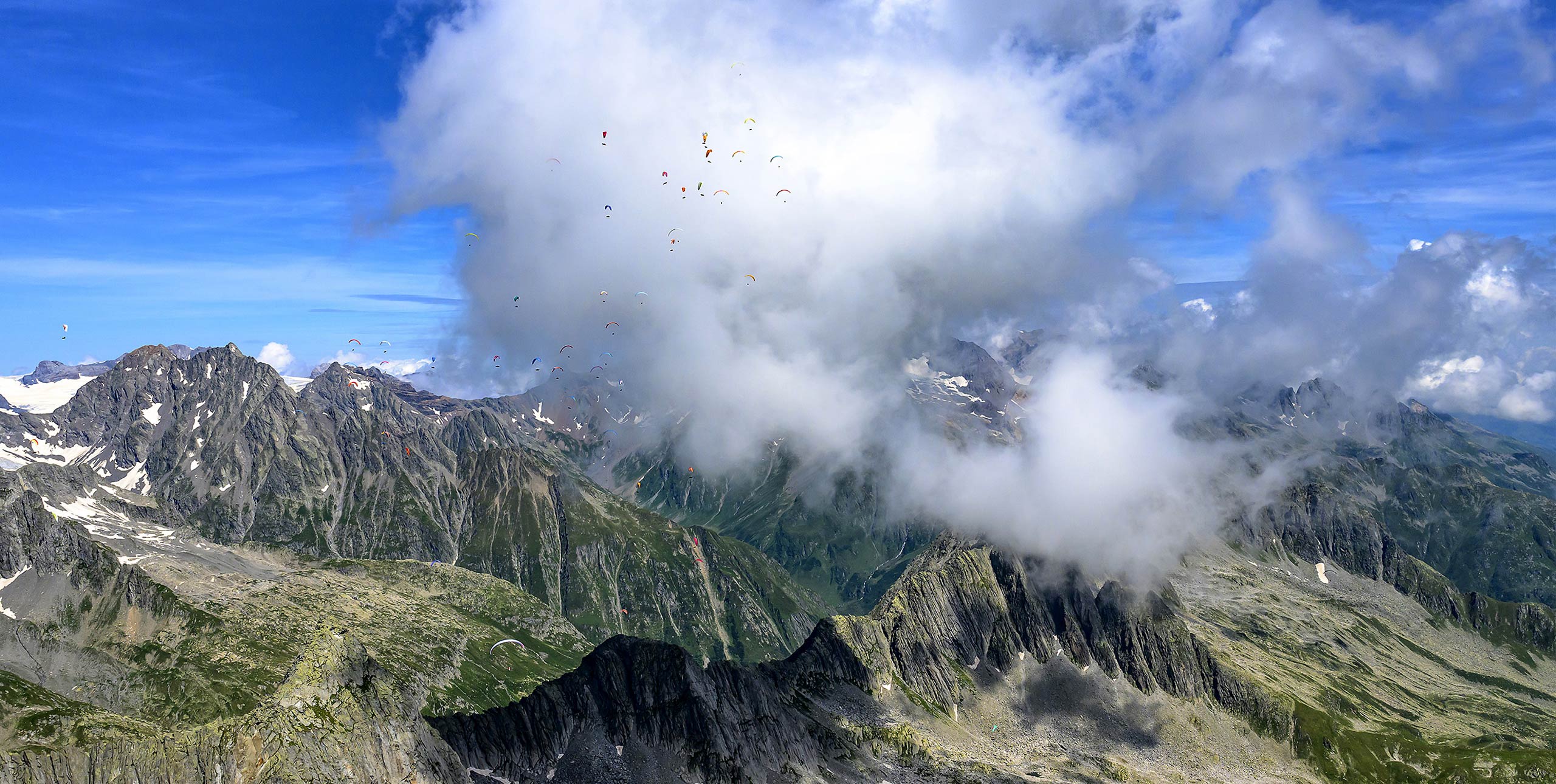
>> Stay in touch. Get the latest news, safety notices and gear updates from our sports
With many flying sites still in pandemic deep freeze, hike-and-fly wings are hot right now. Charlie King flies Advance’s new lightweight, EN-certified Pi 3.
Ten-second review
Advance quality, finish and handling in a perfect package for hike-and-fly and more. Six sizes make it an option for everyone.
Background
Advance’s Pi is something of a classic when it comes to hike-and-fly wings, and we’ve flown, and enjoyed, all of them. The third generation was released in November 2020 and we got straight in the queue to test one.
The Pi 3 is available in six sizes, from 16m2 (EN C for 50-90kg) to 25m2 (EN A or B for 80-120kg). Marcus and I both wanted to fly it, so the 19 was the obvious choice for us. It’s EN B throughout a wide weight range of 50-95kg so accommodates both of us.
Of course, its characteristics vary depending on wing loading, and Advance divide the range into three sections: 50-65kg is thermalling; 65-85kg hike and fly; 85-95 mini wing. I flew at about 62kg, which is in the ‘thermalling’ area. Marcus, at 87kg, is just into the mini wing range.
First impression
The Pi 3 is delivered in a package with a zipped compress bag that slides into the brilliant, well thought-out new hike-and-fly Lightpack. It’s very Advance. You can see a lot of thought has gone into each element, and it all works absolutely perfectly together.
Even the compress bag needs a mention, with its widened zip to ensure you don’t catch any material as you zip it up. The inner slides neatly into the rucksack, and the rucksack is perfectly designed for everyday hike-and-fly with everything you need from side-bottle holders to an external helmet holder that is light without being fiddly or fragile. There’s enough room for extras without risking it getting big or bulky and a stretchy front pocket accommodates a down jacket. The waist and shoulder straps are aerated, and it’s all neat and trim.
We had the wing during winter in the south of France. It has been especially snowy, so several of our outings were on snowshoes. One little mention here that I did swap the Lightpack for a larger rucksack for a day out in the Mercantour, to make sure there was room for a day’s water and plenty of clothes, and to stow the snowshoes on the flight (although snowshoes do fit in the Lightpack).

Design
So, to the wing. It’s so red and shiny! (Also available in white). The 16 and 19 are made of Dominico 10D, top, bottom and leading edge, which is 25g/m2 and so soft and slippery to touch… and to pack! The leading edge supports are nitinol. These two smallest sizes have been absolutely optimised for weight, for big mountain adventures. The larger sizes are made from Porcher Skytex 27 and 32 with nylon wires. Advance recommend concertina packing to protect the leading edge, and I found this was best done with a helper. It’s a wing you need to respect and look after, optimised for lightness over robustness.
The lines are unsheathed and connect to the risers with neoprene-housed softlinks, and the brake handles have neoprene for comfort, and popper attachments. The risers are colour-coded – blue for the A’s, which have stitching on the back to ensure you connect the right way round. There is a speed system, with neoprene sheaths to protect the pulleys.
Despite all these nice finishing touches, the 19 weighs just 2.15kg. It’s so light, and such an easy-to-carry package. Add a Strapless 2, or in our case le Slip from AirDesign, for an extra 200g; seriously, that’s a dribble of water. We grabbed it on occasion for snowshoeing up the mountain on days that didn’t really look flyable, ‘just in case’. We carried it back down a few times too, but you don’t really notice it’s there so you might as well.
In flight
But what’s it like to fly? Well, it’s easy! Forgiving and fun. It comes up in the lightest of winds, organises itself and is there above your head ready for you. Most of our launches were in light or even light tailwinds, but we had a snowshoe adventure in the Mercantour where my launch was in gusty conditions. It was on a north-facing, deep snow-covered ridge above cliffs, in freezing cold, at 2,500m. We had an hour or so of daylight left, with more than an hour’s walk down if we failed to get off. No pressure!
Gusty launches aren’t my favourites, especially ones where you don’t want to be dragged around (cliff, icy, snowy). You can’t be nimble in snowshoes so I went for nimbleness and no snowshoes. The wing came up fast (I overdid the pull as I do when I’m nervous), stopped dead still when I dabbed the brakes and sat above me while I turned. Perfect. We started the launch ‘run’. After a step or two my feet were so deep in snow I could no longer move them. I had the impression I was leaving my feet behind as my head neared the edge of the cliff, went for a little dab on the brakes (hope there’s enough speed) and it flew me off like the little gem that it is with absolutely no drama. Yeehah! Thank you Pi! The flight down was serene, beautiful and freezing.
Back home in the south of France I had a couple of thermalling flights and yes, you can thermal it. It’s light on the controls, and the sail does feel light: you can feel it moving, and it gets pushed around by strong air a bit, but it’s super responsive and intuitive and it climbs beautifully.
Marcus flew the Pi 3 in the start of the mini wing range. He said it was speedy and dynamic but without feeling extreme. There was still a good brake range but the wing feels sharp and reactive – great fun for carving turns close to the terrain on the way down the mountain. He also noted that it retains its energy well, really coming into its own in zero-wind landings where giving it some speed makes flaring for the landing effective.

The verdict
In summary, it’s a beautiful wing that comes in a perfect package, and it looks after you. So hugely forgiving on launch, fun to fly, with the peace of mind of EN-B certification. And it’s light enough that you can bring it along ‘just in case’.
MANUFACTURER’S SPECIFICATIONS
What Advance say: “One of the lightest low-pack-volume serial wings on the market”
Use: Hike-and-fly, climb-and-fly
Pilot level: Beginners and leisure pilots through to experts, depending on wing loading
Flat area (m²): 16, 19, 21, 23, 25, 27
Certified take-off weight (kg): 50-90, 50-95, 60-100, 70-110, 80-120, 92-125
Glider weight (kg): 1.85, 2.15, 2.55, 2.75, 2.95, 3.15
Cells: 38
Flat aspect ratio: 4.5
Certification: C, B, A/B, A/B, A/B, A/B
>> Stay in touch. Get the latest news, safety notices and gear updates from our sports











